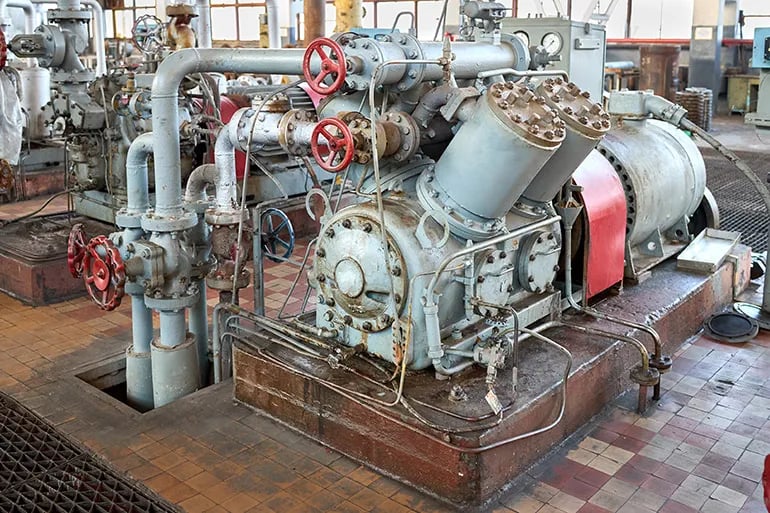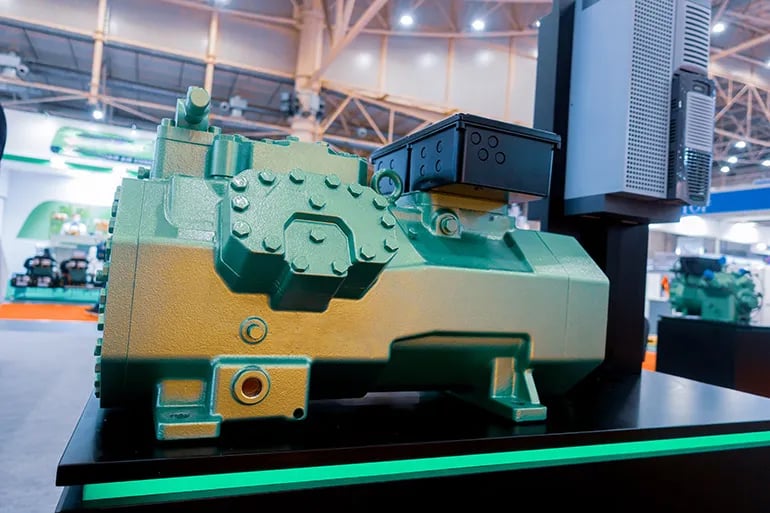Importance of Reciprocating Compressor Maintenance for Efficiency
Maintaining a reciprocating compressor is not just a matter of routine. It's a critical aspect that directly impacts its efficiency, operational lifespan, and overall performance. These compressors, characterized by their piston-driven mechanism, are integral to numerous industrial and commercial applications.
A well-maintained reciprocating compressor is more energy-efficient, consuming less energy and offering cost savings for the operator. Keeping components like valves, rings, and seals in top condition ensures that the compressor doesn’t overexert. Regular maintenance also plays a vital role in preventing unplanned downtime. This proactive approach extends the compressor's lifespan. It also supports environmental responsibility by ensuring the compressor runs efficiently, emits fewer pollutants, and adheres to environmental standards.
Reciprocating Compressor Maintenance Checklist & Best Practices
Understanding the different aspects of compressor maintenance can help in enhancing efficiency and lifespan. Here's an overview of the key maintenance areas that should be performed on reciprocating compressors:
- Regular Inspections: Routine inspections are fundamental. They involve checking for leaks, abnormal vibrations, unusual noises, and signs of wear and tear. These inspections can identify potential problems early, allowing for timely interventions.
- Lubrication and Oil Maintenance: Proper lubrication is vital for the smooth operation of moving parts in a reciprocating compressor. This includes regular checks and changes of the compressor oil, as per the manufacturer's recommendations.
- Filter and Cooling System Maintenance: The air intake and filtration system should be kept clean to ensure efficient operation. A clogged filter can reduce efficiency and strain the compressor. The cooling system must be regularly checked to ensure it is functioning correctly, preventing the compressor from overheating.
- Valve and Belt Maintenance: Reciprocating compressors have various valves that need regular inspection and maintenance to ensure proper sealing and efficient operation. Belts and other drive system components should also be inspected for proper tension and alignment, as these can affect the compressor's performance.
- Safety Checks and Compliance: Regular safety checks are crucial. This includes inspecting safety valves, pressure relief systems, and other safety devices to ensure they comply with relevant standards and are functioning correctly.
- Custom Solutions and Advanced Materials: For specialized applications, custom solutions like those offered by St. Marys Carbon, including carbon graphite, electrographite, and resin-bonded graphite components, can be integrated into the maintenance plan. These materials offer unique advantages like high thermal conductivity and stability, which are crucial for maintaining compressor efficiency.
Maintaining a reciprocating compressor is a multifaceted task that involves understanding the specific requirements of your compressor, regular inspections and servicing, and adherence to safety and environmental standards. This comprehensive approach ensures that your compressor operates efficiently and reliably.
Key Factors That Affect Reciprocating Compressor Efficiency
The efficiency of reciprocating compressors is influenced by several key factors. Understanding and managing these factors is crucial for maintaining optimal performance and extending the life of the compressor.
Here are some of the primary factors:
- Lubrication: Adequate lubrication is very important. It reduces friction between moving parts, minimizes wear, and keeps the compressor running smoothly.
- Temperature Control: Compressors generate heat during operation. Efficient temperature control is essential to prevent overheating, which can lead to premature wear and failure.
- Air Intake Quality: The quality of air entering the compressor affects its efficiency. Air contaminated with dust, moisture, or other particles can lead to increased wear and tear.
- Vibration Control: Excessive vibration can lead to misalignment of compressor parts and increased damage to the compressor. Ensuring that the compressor is properly mounted and using vibration dampeners can help maintain alignment and reduce wear, thus improving efficiency.
- Component Wear and Tear: Over time, components of the compressor, such as valves, compressor rings, and seals, will wear out. Regular inspection and timely replacement of these components are critical to maintain compressor efficiency. Advanced materials used in components like the HALO™ carbon graphite compressor rings offer superior performance and can reduce the frequency of replacements due to their durability.
- Pressure Settings and Load Management: Optimizing the pressure settings according to the specific needs of the application can significantly improve efficiency. Avoiding overloading the compressor and ensuring it operates within its design parameters is essential for maintaining efficiency.
- Regular Maintenance and Inspections: Regular maintenance is crucial. It includes routine inspections for leaks, checking and tightening of bolts and fasteners, and monitoring operating parameters.
- Environmental Factors: The operating environment of the compressor can also affect its efficiency. High humidity, extreme temperatures, and dusty conditions can all impact compressor performance.

By paying attention to these key factors, operators can ensure that their reciprocating compressors run at peak efficiency. This not only saves energy and reduces operational costs but also extends the lifespan of the compressor, making it a cost-effective and environmentally friendly choice for various industrial applications.
How Can St. Marys Carbon Help with Compressor Efficiency?
The HALO™ turbine & compressor rings play an important role in enhancing reciprocating compressor efficiency. Made from superior carbon graphite grades, these rings offer key advantages like high-temperature stability and low friction/wear due to their self-lubricating properties. These properties significantly reduce failure rates and allow for use in various environments.
Our carbon graphite compressor rings are used in a wide range of end products and markets. We can also customize them for specific requirements to ensure they meet the unique demands of different applications.
Wrapping up - How to Maintain a Reciprocating Compressor
Maintaining reciprocating compressors extends beyond a mere technical necessity; it's a strategic method for ensuring sustained operational efficacy. Regular, all-encompassing maintenance, which includes using appropriate lubricants and swapping out parts, is key to cost savings and enhanced safety.
Similarly, the integration of carbon graphite grades in sophisticated components like St. Marys Carbon's HALO™ turbine and compressor rings elevates this efficiency. When these factors are combined with meticulous maintenance routines, the result is a notable enhancement in the performance, longevity, and safety of steam turbines. This holistic approach to maintenance not only boosts functionality but also contributes significantly to the operational security and efficiency of the turbines.



